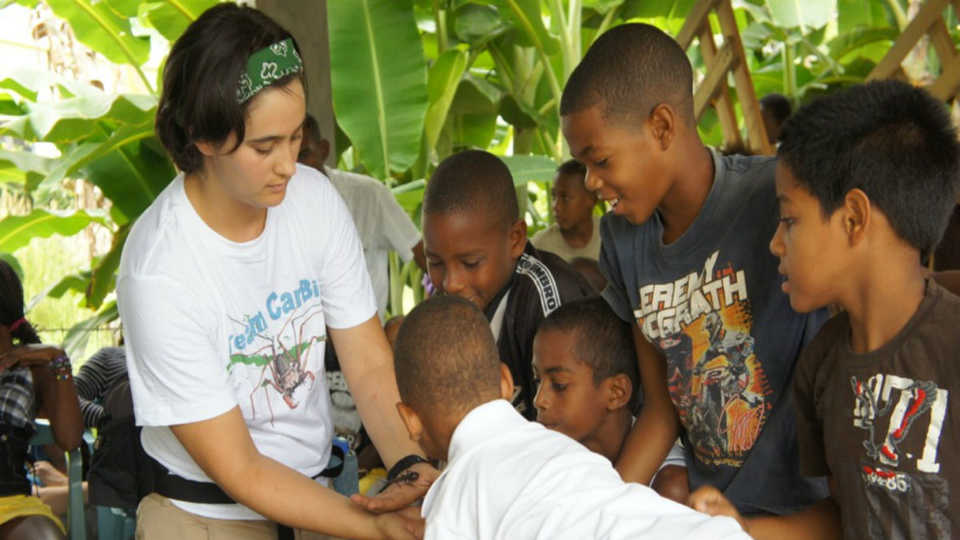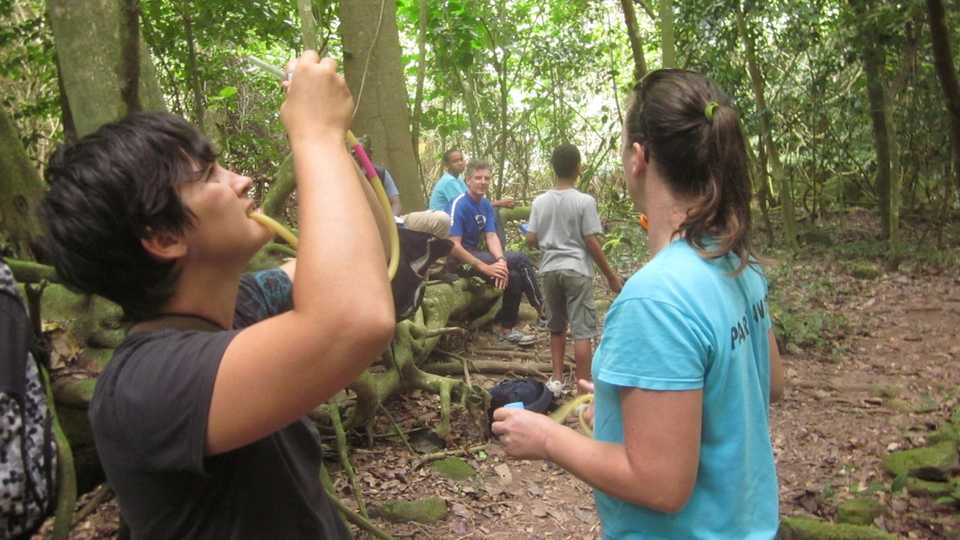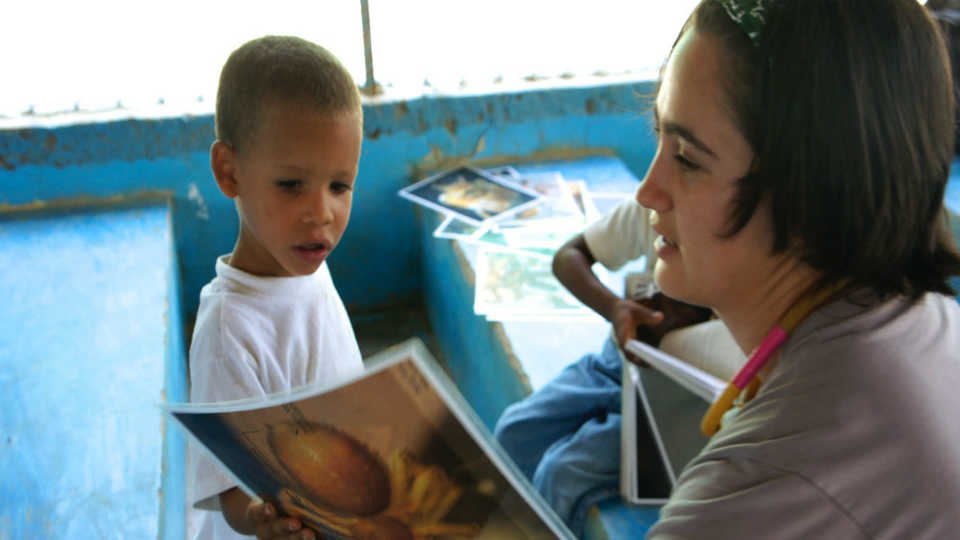Dr. Lauren Esposito, scorpion expert, joins the Academy’s Institute for Biodiversity Science and Sustainability
SAN FRANCISCO (September 21, 2015) — The California Academy of Sciences is pleased to announce the appointment of Lauren Esposito, PhD, as its newest Assistant Curator and Schlinger Chair of Arachnology. In her new role, Esposito will study the patterns and processes of evolution in spiders, scorpions, and their fascinating venoms. In addition to her research, Esposito intends to continue her passionate dedication to public engagement and science education. By empowering students and citizen scientists—both at home in the U.S. and abroad—Esposito helps share the inherent wonder in the scientific process of research and discovery.
“I can’t think of a better way to help sustain the future of our planet,” says Esposito, the Academy’s newest curator, when asked about her role as a museum scientist. “As we explore and document global biodiversity, we discover the best ways to preserve it for future generations. I see my museum role as an exciting chance to help communities from the Bay Area to South America understand and protect their local environments.”
"We're thrilled to welcome Lauren to the Academy during this time of unprecedented growth within our research division," says Meg Lowman, PhD, Chief of Science and Sustainability at the Academy. "Her passion for empowering global communities to explore science is well aligned with our mission to explore and explain life, and her research on arachnid diversity and evolution will contribute to our global efforts to sustain the biodiversity of our planet."
Esposito says she’s thrilled to speak up for spiders, scorpions, and “most things that crawl.” Her fascination with wildlife—and insects in particular—began as a child, carefully collecting and preserving commonplace bugs found around her Texas neighborhood as well as her grandparents’ home on a remote Caribbean island.
Esposito graduated from her childhood habit of lovingly storing insects in egg crates to, years later, caring for and researching some of the world’s most treasured entomology collections as part of her university studies. After a summer undergraduate internship focusing on southern African scorpions, Esposito felt drawn to studying arachnids and working outdoors on field expeditions. Undergraduate degree in hand, she jumped at the chance to complete a PhD in arachnology at New York’s American Museum of Natural History.
Stranger-than-fiction scorpion adaptations
“Scorpions are the oldest living terrestrial arthropods on Earth—even older than cockroaches,” says Esposito. “In studying their evolution, we see some of the most fascinating adaptations in the animal kingdom. We’ve only scratched the surface in our understanding of their astonishing behaviors. There is still so much left for us to learn.”
One example of extraordinary scorpion resourcefulness is observed in Smeringurus mesaensis—a species of dune scorpion found in California, Arizona, and parts of Mexico. This nocturnal scorpion—less than three inches long—digs burrows stretching nearly three feet into the dry desert landscape, carving out a cool, safe place to rest during daylight hours. Digging and maintaining these elaborate burrows is an energy-intensive process, and because it must save time to hunt and mate, S. mesaensis has found a way to map its way home after a night of exploring.
“Despite having poor vision, S. mesaensis probably uses the three sets of eyes on its head to trace its way home,” says Esposito. “We think it might actually be triangulating light from the stars above into a map leading straight to its burrow. The direction of wind currents might also play a role. The more we learn about scorpions, the more we marvel at the ways life adapts to harsh landscapes.”
Cancer-fighting venoms
Scorpion venoms are powerful, prey-specific, and, as researchers are currently exploring, medically important. Esposito highlights the astonishing area of research that ties specific scorpion venoms to advances in cancer treatments as an exciting reason to be an arachnologist in the modern era.
“Brain tumors called gliomas are a nasty business,” says Esposito, referring to the malignant tumors that carry a slim chance of survival for patients with “high grade,” or aggressive, cases.
“Venom peptides found in Leiurus quinquestriatus, the Deathstalker scorpion, have been shown to bind specifically to these tumors. Researchers have used this property to their advantage by attaching a dye to make tumors glow, allowing them to paint problem areas in a way no other technology has been able to replicate. Knowing that our discoveries can contribute to cancer treatments is a great motivation to continue untangling the scientific nature and function of all the different scorpion venoms I encounter in my work.”
“Milking scorpions”
Esposito attributes the public’s common fear of spiders and scorpions to a lack of understanding, and in very rare face-to-face cases, good common sense.
“Fewer than 1% of spiders and scorpions pose any real danger to humans, but it’s always good to stay informed about the wildlife in your community and vacation destinations,” says Esposito. “It’s far more likely that any arachnids you encounter are harmless, and busy disposing of the houseflies and cockroaches in your area. These animals aren’t just helpful, they hold evolutionary secrets formed over millions of years that tell us important information about ourselves as well as our environment.”
Scorpion venoms hold the most significant “evolutionary secrets” Esposito and her colleagues are keen to explore. Aside from playing important roles in medical research, these venoms display a high degree of predator and prey specificity—the lightning-fast ability to target the nervous systems of a wide range of animals—scientists have yet to fully explain.
“We know a single scorpion can carry the genes for more than 200 unique venoms in its DNA,” says Esposito. “Studying how this venom diversity evolved helps us understand how one creature can evolve the ability to strike hundreds of specific targets. If you want to know how to safely collect venom to do this type of research, I’m your scientist.”
The process of “milking” scorpions involves capturing a live specimen from the field, enclosing it in a box, and lightly stroking its back with a piece of wax paper stretched tautly over a wire frame. The perturbed scorpion strikes the wax paper, spearing a hole with its sharp, venom-filled stinger. Once its glands are completely drained of venom, the scorpion’s venom genes kick into gear and begin manufacturing a fresh supply. Esposito uses advanced technology to look at the actual venom genes the scorpion is using to produce this venom cocktail, and test hypotheses about the evolution and nature of different venoms from the safety of the lab.
Beyond the lab
As part of her commitment to increasing global access to science tools and education, Esposito co-founded the science and education non-profit Islands and Seas. Her organization is currently building a global network of small research and education stations on islands and along mainland coastlines where local residents, scientists, and tourists can work together help conserve unique natural resources.
First up—refurbishing a donated 39-ft research vessel and building a new “off-the-grid” facility in Scorpion Bay, a small fishing village and surfing destination in Baja California. The research station seeks to inform nearby ecotourism and sustainable development through education—including local field activities for local residents—while providing access and research space to visiting scientists conducting valuable biodiversity research in the region.
“It’s a happy coincidence that our inaugural Scorpion Bay station bears the name of my favorite critter,” says Esposito, who will continue to help grow Islands and Seas into a global network while serving as Academy curator. “This untamed arid ecosystem is beautiful, but incredibly fragile in the face of tourism, pollution, and climate change. As scientists, it’s our responsibility to support low-cost, high-quality methods of raising conservation awareness and inspiring the next generation of environmental stewards around the world.”
Prior to joining the Academy, Esposito travelled extensively in the Caribbean region as a National Science Foundation postdoctoral fellow at the University of California at Berkeley, studying biogeography of arachnids in one of the most biodiverse regions on Earth. Her doctoral dissertation was completed at the American Museum of Natural History in collaboration with the City University of New York, and focused on the medically important North American scorpion genus Centruroides. When she’s not sailing around the Caribbean islands or trekking through forests at the intersection between South and Central America, she can be found basking in the fog at San Francisco’s Ocean Beach.
The Institute for Biodiversity Science and Sustainability at the California Academy of Sciences is at the forefront of efforts to understand two of the most important topics of our time: the nature and sustainability of life on Earth. Based in San Francisco, the Institute is home to more than 100 world-class scientists, state-of-the-art facilities, and nearly 46 million scientific specimens from around the world. The Institute also leverages the expertise and efforts of more than 100 international Associates and 400 distinguished Fellows. Through expeditions around the globe, investigations in the lab, and analysis of vast biological datasets, the Institute’s scientists work to understand the evolution and interconnectedness of organisms and ecosystems, the threats they face around the world, and the most effective strategies for sustaining them into the future. Through innovative partnerships and public engagement initiatives, they also guide critical sustainability and conservation decisions worldwide, inspire and mentor the next generation of scientists, and foster responsible stewardship of our planet.
Press Contacts
If you are a journalist and would like to receive Academy press releases please contact press@calacademy.org.
Digital Assets
Hi-res and low-res image downloads are available for editorial use. Contact us at press@calacademy.org to request access.


